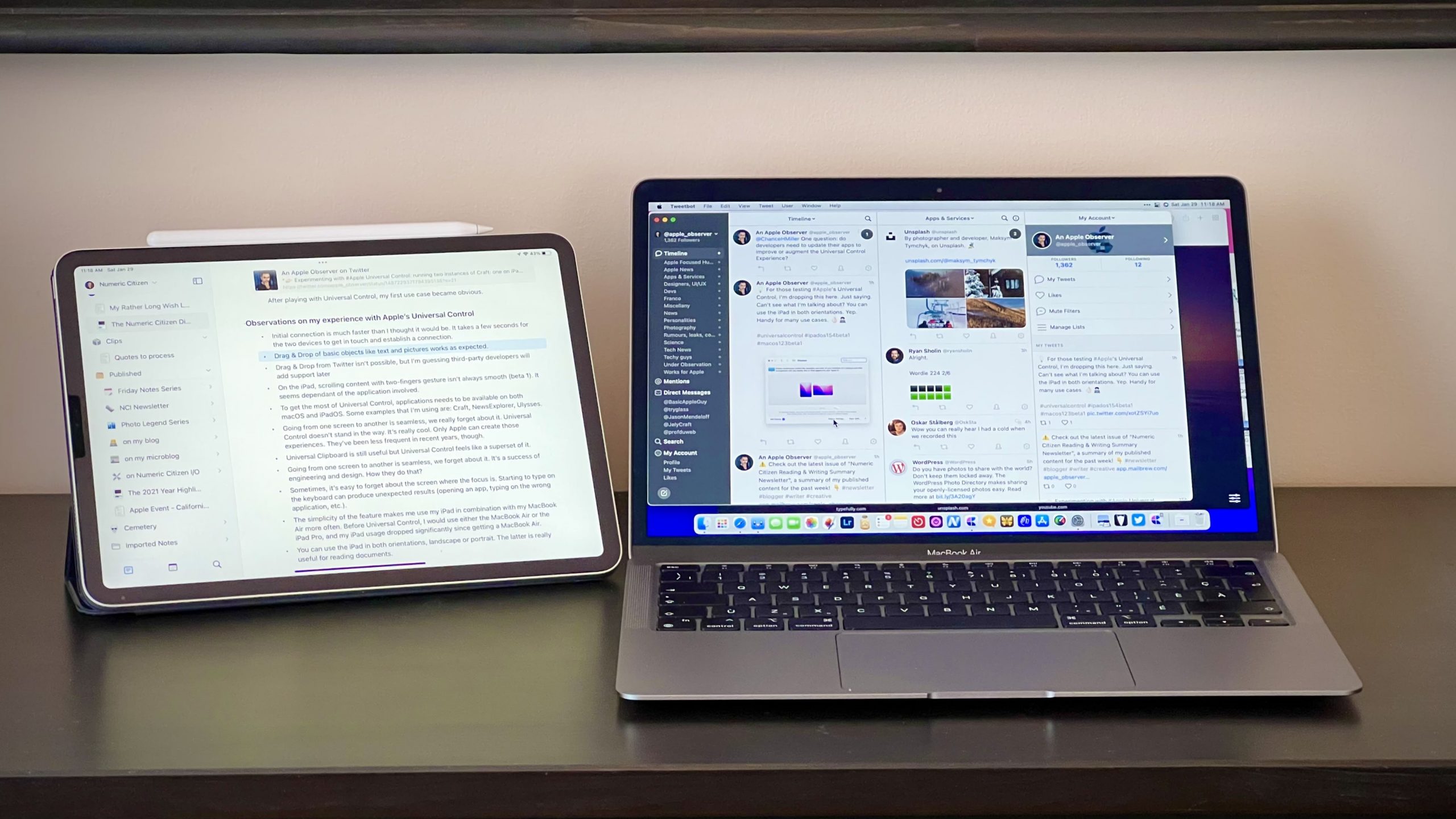

Then, move the cursor past the left or right edge of your Mac display. First, put the two devices next to each other.
SETTING UP UNIVERSAL CONTROL MAC HOW TO
Read more > How to use Universal Control?Īfter you've turned on the Universal Control between your Mac and iPad, let's see how to use Universal Control. This post tells you why Apple Universal Control not working on Monterey and how to fix Universal Control not working on Mac and iPad. Why & How to Fix Universal Control Not Working on Mac & iPad? It is compatible with the following devices: Universal Control works with iPadOS 15.4 or later and macOS Monterey 12.3 or later. What are the Universal Control system requirements? If you want to take a deeper look at Universal Control, you can navigate to the /System/Library/CoreServices folder on Mac. In simple words, you can use your Mac's keyboard, mouse, or trackpad to control up to two other nearby Mac or iPad devices and work seamlessly between them. Universal Control is one of the best features of the Apple Ecosystem that allows you to use the same peripherals across multiple Macs and iPads. If you're interested in this feature, just read along to know what is Apple Universal Control and how to use it. After users' long wait, Universal Control has finally arrived with the release of iPadOS 15.4 and macOS Monterey 12.3. To indicate a MIDI thru connection, connect the two MIDI devices to the same port of the MIDI interface device.At Apple WWDC 2021, Apple announced a remarkable feature named Universal Control. You can’t specify a “MIDI thru” connection between two MIDI devices. If it doesn’t, see If a connected MIDI device isn’t shown. If you have a MIDI interface connected to the USB port on your Mac, it should appear in the MIDI Studio window. In List View, click a device’s disclosure triangle, click the Port disclosure triangle, click the Add Connection icon, then use the pop-up menus to specify the connections. In Icon View, drag the In or Out connectors at the top of a device icon to the corresponding connector on another device icon. In the MIDI Studio window, specify the connection between MIDI devices: Repeat steps 4 through 7 for each MIDI device you want to include in the configuration.

To turn a profile on or off, select or deselect its checkbox. Select MIDI-CI profiles for interface devices: If an interface device supports MIDI-CI, click MIDI-CI to see the profiles available on each channel. To delete a port, select it in the list, then click the Remove button. Also select whether to use the MIDI Beat Clock, the MIDI Time Code, or both, then select other features.Īdd or remove ports: Click Ports, click the Add button below the list of ports, then specify the MIDI In and MIDI Out connectors for the port. Set the device channels and other properties: Click Properties, then click the channels to use for transmitting and receiving audio. If you know the manufacturer and model, you can enter those.Ĭhange the device icon: Click the MIDI device’s icon to open the Icon Browser, select a different icon to represent the device, then click the new icon to close the Icon Browser.Ĭhange the device color: Click the color well, select a different color to use for the MIDI device, then close the Colors window. In the Properties window, do any of the following:ĭescribe the device: Enter a name for the MIDI device the name appears in apps you use with the device. To set properties and add or remove ports for the MIDI device, double-click the device, or select it, then click the Device Info button in the toolbar. To add a new external MIDI device, click the Add button in the MIDI Studio toolbar. In the MIDI Studio window, click the Choose MIDI Configuration pop-up menu (it may show Default), then choose New Configuration.Įnter a name for the new configuration, then click OK. To view its ports, or to connect or disconnect devices, click the device’s disclosure triangle. To view information about a device, double-click the device. To filter which devices are shown, click the Show pop-up menu, then choose an option (such as Online or Connected). If a device isn’t connected, it’s dimmed. Show List View : Devices in the configuration are shown in a list, organized by type (such as Interface or External Device). To view information about a device, such as channel properties and ports, and to add or remove ports, double-click the device’s icon. If a device isn’t connected, its icon is dimmed. Show Icon View : Devices in the configuration are shown as icons. In the toolbar, click the following buttons to change how the configuration is shown:
:max_bytes(150000):strip_icc()/001_use-a-universal-remote-with-apple-tv-4115481-97a3fc34d0fd4c858459837e301ed98a.jpg)
In the MIDI Studio window, click the Choose MIDI Configuration pop-up menu (it may show Default), then choose the configuration you want to view. In the Audio MIDI Setup app on your Mac, choose Window > Show MIDI Studio.


 0 kommentar(er)
0 kommentar(er)
